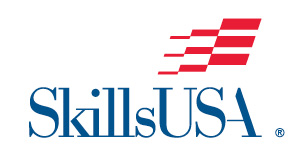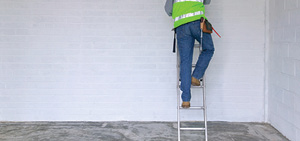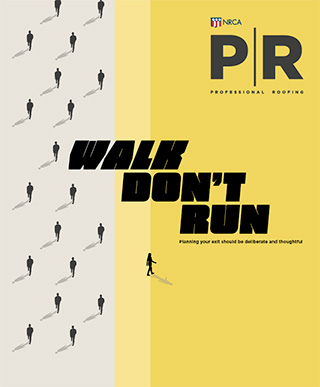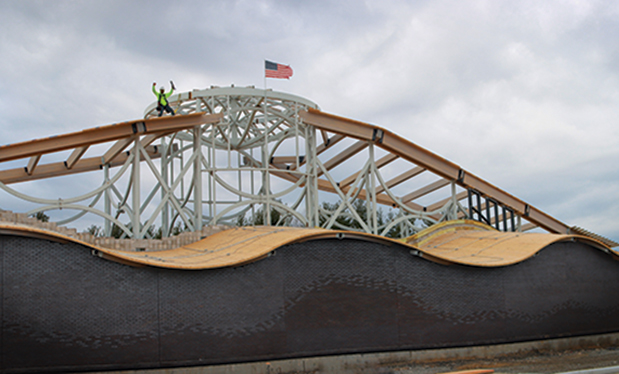Lowe’s Foundation partners with SkillsUSA®
 |
The Lowe’s Foundation has awarded a $1 million Gable Grant to SkillsUSA. The grant is part of the foundation’s five-year, $50 million commitment to help prepare 50,000 people for skilled trades careers and will fund programs in appliance repair, carpentry, construction, electrical, HVAC and plumbing.
On May 7, the Lowe’s Foundation supported SkillsUSA National Signing Day by hosting events at Lowe’s stores nationwide to celebrate students who committed to skilled trades jobs, apprenticeships and education in the trades. Since launching in 2019, more than 500,000 students from 4,700 SkillsUSA schools across the U.S. have graduated.
Additionally, the foundation will support SkillsUSA’s Work-Based Learning initiative that connects student members to educators, businesses and industry partners. The initiative aims to prepare more job-ready skilled trades professionals and allow students to obtain industry-recognized certifications, badges, micro-credentials and more.
“Through partnerships with SkillsUSA and the growing generation of future trades professionals, we are helping the world see that trades careers are not just to be respected but revered,” says Janice Dupré, Lowe’s executive vice president of human resources and chair of the Lowe’s Foundation. “These workers are making smart and sensible career choices that will benefit our country’s homes, neighborhoods and communities for decades to come.”
Learn more about the Lowe’s Foundation at lowes.com/foundation. More information about SkillsUSA is available at skillsusa.org.
Five common causes of ladder incidents
 |
To stay safe on job sites, it is crucial contractors and workers know the common causes of ladder incidents and how to prevent them. ConstructioNext shares the following five most common causes of ladder incidents.
- Missing the last step of the ladder when climbing down. During a recent American Ladder Institute webinar, Eric Blankinship, senior product manager for Werner, emphasized the need to be careful when climbing down a ladder—always face the ladder when climbing up or down and do not skip steps.
- Overreaching while on the ladder. When working on a ladder, keep your center of gravity and body between the side rails. If you cannot easily reach the project area once you have climbed the ladder, climb down and move the ladder closer to the project space.
- The ladder was not the right size for the job. One factor when determining the right ladder for the job is length. Blankinship recommended calculating the user’s maximum reach height—which is about 4 feet higher than the height of the ladder—when selecting a ladder.
- The ladder was not on firm, level ground. There should be no obstructions near the base and top of the ladder. The ladder’s base should be safely secured to prevent movement, or you can use a ladder with nonslip feet or add outriggers or levelers to the bottom of an extension ladder to increase the footprint. When using an extension ladder outside, Blankinship emphasized ensuring you have used the toe picks correctly, confirming the ladder is sunk into solid ground and stepping on the bottom rung to verify it is secure before you climb the ladder.
- Three points of contact were not used when climbing the ladder. It is crucial to always maintain contact with two hands and one foot or two feet and one hand when climbing up or down a ladder to ensure you remain balanced.
NRCA’s safety resources are available at nrca.net/safety. Ladder safety resources also are available at laddersafetytraining.org, the American Ladder Institute’s website.
Buildgirls launches chapter and interview programs
 |
Buildgirls, an initiative aimed at educating high-school-aged girls about Females in Architecture, Construction & Engineering, is launching its new chapter program.
Students now can form a club/chapter in their local community or school if they meet four requirements:
- Have a minimum of four members
- All club members are signed up as Buildgirls members
- Have at least two events per year
- Have at least five meetings per year
Additionally, Buildgirls is looking for female professionals in the architecture, construction or engineering fields to participate in its interview program. The program aims to provide Buildgirls members with information about specific careers and what those jobs are like for women.
More information is available at buildgirls.org.
Gulfeagle Supply acquires Elite Roofing Supply
Gulfeagle Supply, Tampa, Fla., has acquired NRCA member Elite Roofing Supply, Glendale, Ariz.
Gulfeagle Supply is a distributor of residential and commercial roofing supplies and building products with more than 100 locations nationwide. Elite Roofing Supply has 26 branches.
The transition closed at the end of June.
“Elite Roofing Supply is a top-notch organization with a quality management team, and we are so excited to have them join our team,” says Brad Resch, president of Gulfeagle Supply. “They share our same values, and this couldn’t be a better fit to allow us to better serve our contractors, employees and vendors.”
Musculoskeletal pain can lead to early retirement
A recent study by British researchers shows frequent musculoskeletal pain may lead people to retire or leave the workforce early, according to Safety+Health magazine.
Examining data from nearly 1,200 working adults aged 50 and older participating in the English Longitudinal Study of Ageing, researchers studied the relationship between musculoskeletal pain and work cessation, as well as retirement, during a recent 14-year period. Results show musculoskeletal pain sufferers were 1.25 times more likely to retire early and 1.1 times more likely to stop working early. Other factors that play a role in early retirement and early work cessation included higher self-perceived social status and older age at baseline.
To learn how to prevent musculoskeletal disorders in the workplace, see “TLC for MSDs.”



